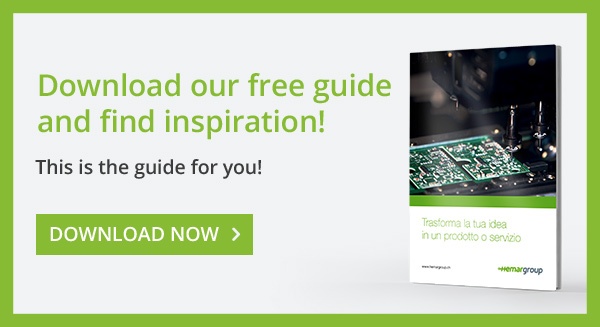
Develop a prototype, put it into production, start selling your product. Sounds simple, right?
In fact, launching a new physical product is anything but easy, especially if it’s a complex one such as an electronic device. Many businesses kid themselves that they can go through the whole process, from concept to market, in a matter of weeks or months.
This is not very realistic for most products, even the simplest.
Firstly, because it's a costly process: most startups don't have the liquidity or risk propensity required to develop a market-ready product all in one go. Creating a complex device usually involves multiple baby steps divided into three key phases: conception, development/production, and market launch.
Here's what to do.
Launching a new electronic product? The three phases of realising your dream
Phase 1: Conception and prototyping, to show that it adds value
In fact, there's often also a phase 0: new projects are often the result of a lightbulb moment when you need to collect data or solve a hardware, software or other problem. Then it's time to find a qualified partner to identify the best technology for you. Phase 1 involves creating a working prototype as proof of concept while keeping risks and costs as low as possible.
In electronics, this usually means using a development kit or modules.
A development kit lets you create an electronic prototype without making personalised printed circuit boards. It usually consists of a board with a microcontroller and peripherals and accessories. These are functional and low-cost, but have sufficient resources to be programmable and serve as the future product’s brain.
Readymade add-on modules are designed to carry out a specific subfunction, and are often certified. By connecting them to the base kit, it's easy to add more facilities to your product, such as wifi, Bluetooth, GPS, and video acquisition. Once all the modules have been assembled into a single product, you’ll eventually need to think about intellectual property and certification. But that would cost a fortune if you do it now.
Either way, it's not possible to launch an electronic product based only on a development kit, because the end product would be too expensive, and in many cases too big, to be workable. This stage serves simply to show that your product works as intended.
Another important fact to bear in mind is that most investors will hesitate to fund a product that they see at the kit stage. In our long experience, they usually want the product to have moved on to the next stage before they’ll consider it.
Phase 2: Develop the product to prove that it will sell
The next stage involves creating a saleable product that looks good in stores and at trade fairs. This means making a number of devices for market testing, and getting feedback.
Think you've met a consumer need? To be honest, not everyone gets it right first time, but we hope you come close! The only way to find out exactly what customers want is to get real-world feedback: if customers like your product, they’ll spend money on it.
You can still use external modules to add more advanced functions. At this stage, very little of the product is analogue. It's essential to develop smart software that doesn't just do what it's told, but uses sensors or microcontrollers to evaluate data. You also need to think about the aesthetic aspects of the end product, including colours and materials, and about such things as cases, cables, installation, how it fits together, how it closes, labelling, and traceability.
The purpose of this stage is to make something that will sell, even though it may not be sufficiently perfected to make a profit. If you can break even, that's great, but you may have to start by selling at a loss. Bear in mind that at this point, your main objective is to obtain market data, not make money. You will make a profit, but it may take a while.
Using electronic modules at this stage is a great way of implementing complex functions without spending a fortune on development. Wireless functions, too, are complex to manage, and a module can make them much simpler.
Phase 3: the money starts rolling in!
Now it's time to concentrate on making a profit. Once your production volumes have justified your investment, we recommend taking things to the next level and creating a personalised device that’s entirely yours, without using modules. This will reduce your unit production cost and increase your profit margins.
Like any good entrepreneur, you'll spend your entire life trying to keep costs down! Following this step towards product development will reduce the risks you face and increase the likelihood of being successful and making money.
And finally, you’ve realised your dream! Your idea is now on the shelves, and something you can hold in your hand! Bringing a new product to life is the best feeling in the world.
Looking to make a marketable electronic product and seeking good ideas?
.png)
